In recent years, almond flour has surged in popularity, becoming a staple in many health-conscious kitchens. Celebrated for its rich, nutty flavor and versatility, it’s often favored in gluten-free and low-carb recipes.

However, as with any food trend, there are times when we seek alternatives—whether due to allergies, dietary preferences, or simply the desire for a change in flavor and texture.
Exploring substitutes for almond flour not only caters to diverse dietary needs but also opens the door to a world of culinary experimentation and innovation.
Highlights
- Diverse Options: I learned that there’s a wide range of substitutes for almond flour, from coconut flour and gluten-free flour mixes to nut-based flours like walnut or cashew flour. Each has its unique properties and can bring a new dimension to recipes.
- Adjustments May Be Needed: Substituting almond flour isn’t always a straight swap. Depending on the alternative, I might need to adjust the amount of liquid or baking time to achieve the desired outcome. This requires a bit of experimentation but is well worth the effort.
- Nutritional Considerations: While exploring almond flour substitutes, I also considered their nutritional profiles. Many alternatives offer their own set of health benefits, such as higher fiber content or different vitamins and minerals, making them not just a workaround but a nutritious choice in their own right.
Advantages of Using Almond Flour
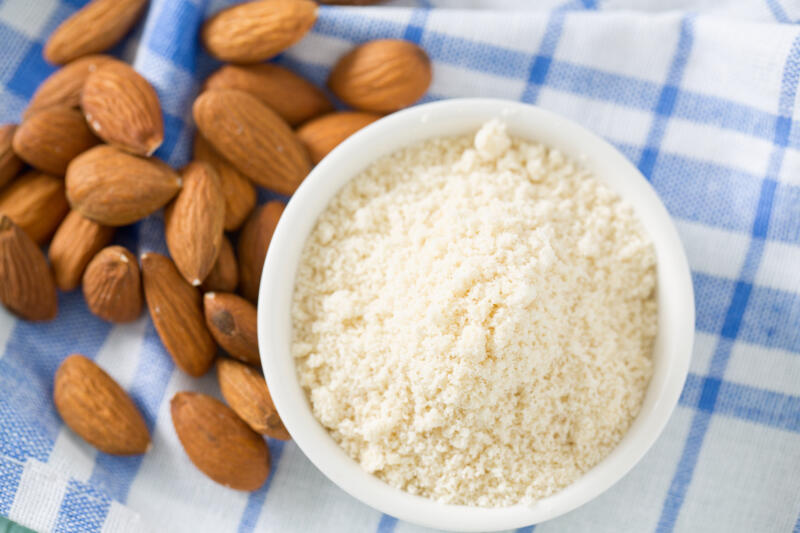
When it comes to baking and cooking, almond flour is a popular choice among health-conscious home cooks and professional chefs alike.
One of the main reasons for its popularity is its impressive nutritional profile.
Almond flour is low in carbs, high in healthy fats and protein, and is completely gluten-free, making it a suitable option for those with gluten sensitivities or following a paleo diet.
Besides its nutritional perks, almond flour has a low glycemic index, which means it won’t cause quick spikes in blood sugar levels.
Additionally, its high fiber content aids in digestion and can help you stay full and satisfied.
Plus, it’s rich in Vitamin E and calcium, both essential nutrients for overall health.
But the benefits of almond flour go beyond just nutrition. The taste and texture that almond flour adds to recipes is often a reason people choose to use it.
It lends a delicate, nutty flavor and a moist, tender crumb to baked goods that is hard to replicate with other flours.
Common Types of Almond Flour Substitutes

While almond flour has many advantages, there are times when you might need or want to use a substitute. Let’s explore some of the most common substitutes for almond flour.
Gluten-Free Flours
1. Coconut
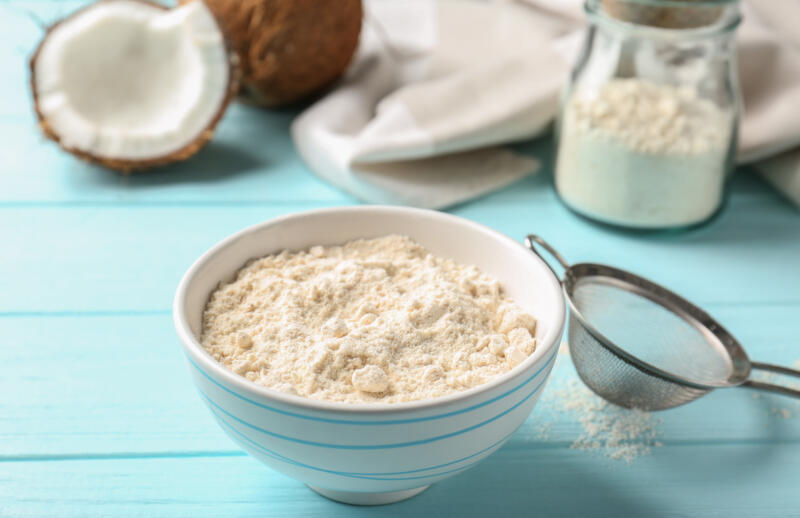
Coconut flour stands out as a well-liked substitute for almond flour.
Derived from desiccated coconut flesh, it offers a mild sweetness and serves as an excellent option for individuals with nut allergies.
Nevertheless, it’s crucial to understand that coconut flour has remarkable absorbency, thus necessitating additional liquid in recipes when compared to almond flour.
Due to its distinct absorbent quality, coconut flour cannot be directly substituted for almond flour in a 1:1 ratio. It typically requires more eggs and liquid to ensure your baked goods don’t turn out too dry.
Despite this, its unique flavor and nutritional benefits make it a worthy alternative to consider.
2. Gluten-Free Mix
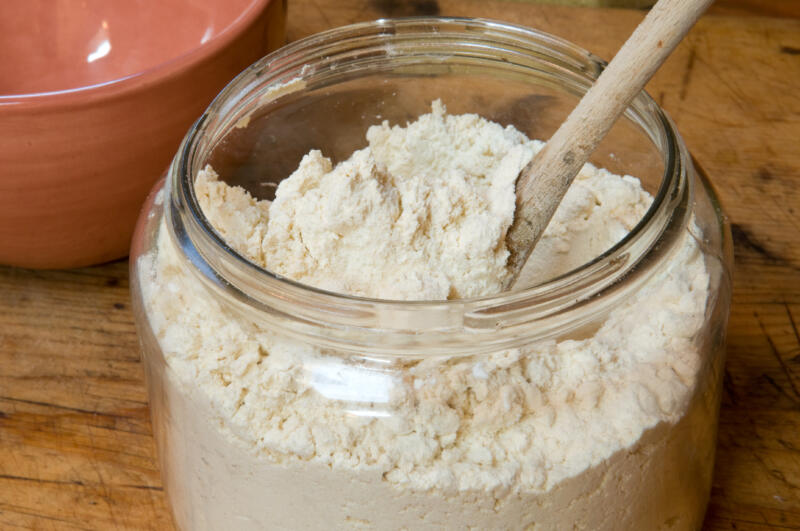
If you’re looking to steer clear of gluten or simply prefer gluten-free options, there are a variety of alternative flours that can be used in place of almond flour.
A gluten-free flour mix, composed of grains and starches, is a versatile option that can be used in a variety of recipes.
For a more homemade touch, you can make your own gluten-free flour using a combination of rice flour, potato starch, tapioca starch, and xanthan gum.
Standard gluten-free flour, which varies by brand, can also be used as a substitute for almond flour.
The recommended starting amount is ¾ of the required amount of almond flour, but you may need to adjust this based on the specific recipe and the brand of gluten-free flour you’re using.
3. Oat
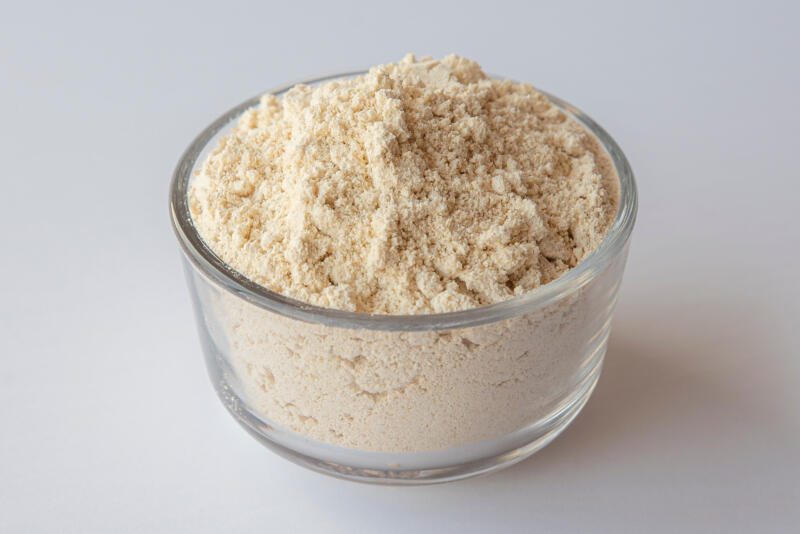
Oat flour is another alternative to almond flour.
It’s naturally gluten-free and has a slightly heavier texture compared to almond flour.
You can easily make oat flour at home using a high-speed blender, grinding whole oats until they reach a fine, flour-like consistency. Oat flour has a mild, slightly sweet flavor and offers nutritional benefits such as high fiber and protein content.
It’s a versatile flour that can be used in a variety of baking recipes, from cookies to breads.
4. Cassava
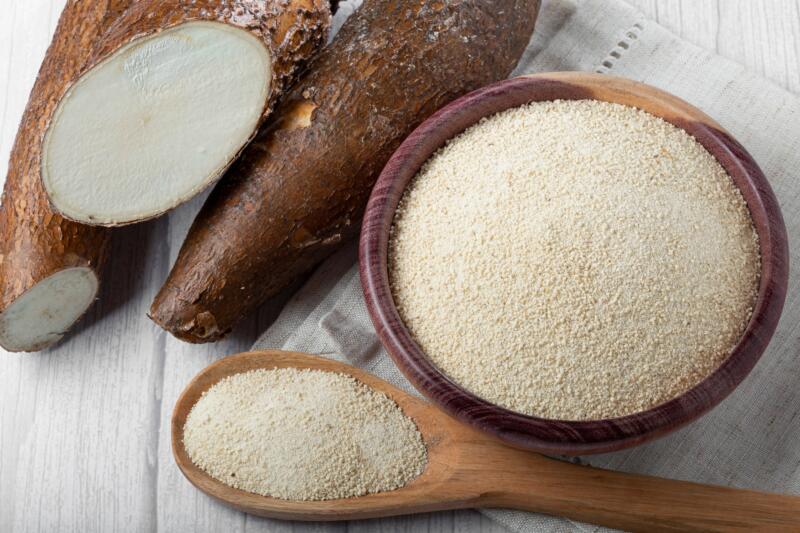
Obtained from the starchy cassava root, cassava flour serves as an excellent substitute for almond flour.
This gluten-free flour is especially suitable for those with nut allergies or sensitivities.
Unlike almond flour, cassava flour is more absorbent and imparts a distinct, coarser texture to baked goods.
Its versatility shines in a range of recipes, from breads to cookies, making it a valuable addition to any kitchen.
5. Tapioca

Tapioca flour, or tapioca starch, is sourced from the cassava root and is inherently gluten-free.
Unlike almond flour, which has a nutty flavor and a more substantial texture, tapioca flour is neutral in taste and is primarily used for its binding and thickening properties in cooking and baking.
When used in baked goods, it can impart a chewy texture and is often combined with other flours to achieve the desired consistency.
While it’s a versatile ingredient, substituting almond flour with tapioca flour directly may not yield the same results, and adjustments to the recipe might be necessary. It’s always recommended to start with a test batch when making such substitutions.
Nut Flours
If you’re a fan of the nutty flavor that almond flour brings to your recipes, there are several other nutty flavored flours that can serve as suitable substitutes.
These flours offer a similar texture and fat content to almond flour, making them ideal replacements in most recipes.
6. Walnut
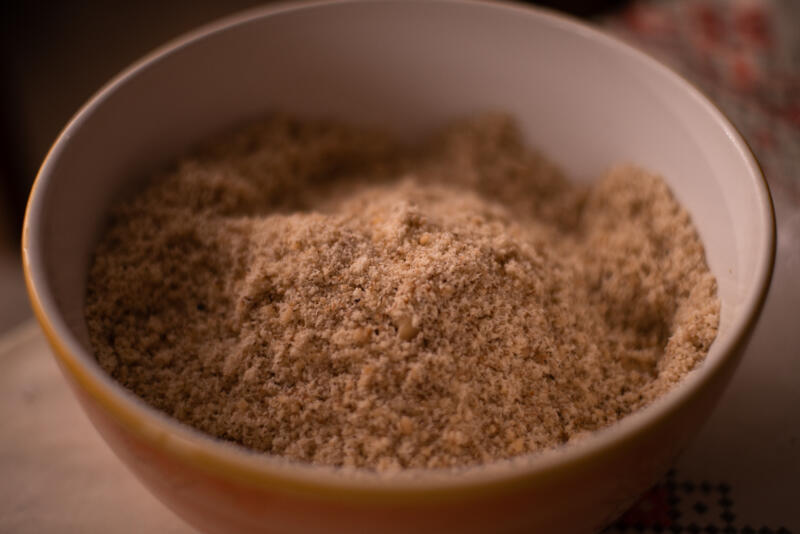
Walnut flour, derived from finely ground walnuts, emerges as a compelling gluten-free substitute for almond flour.
While it retains the nutty undertones familiar to almond flour enthusiasts, it introduces a deeper, more earthy flavor profile unique to walnuts.
Nutritionally, it’s a powerhouse, brimming with omega-3 fatty acids, proteins, and antioxidants.
When used in baking, from sumptuous breads and muffins to delightful cookies and pancakes, walnut flour not only imparts a distinct taste but also lends a slightly denser texture to the creations.
For those seeking a twist in their regular recipes or catering to specific dietary needs, walnut flour offers a flavorful and textured alternative.
7. Cashew
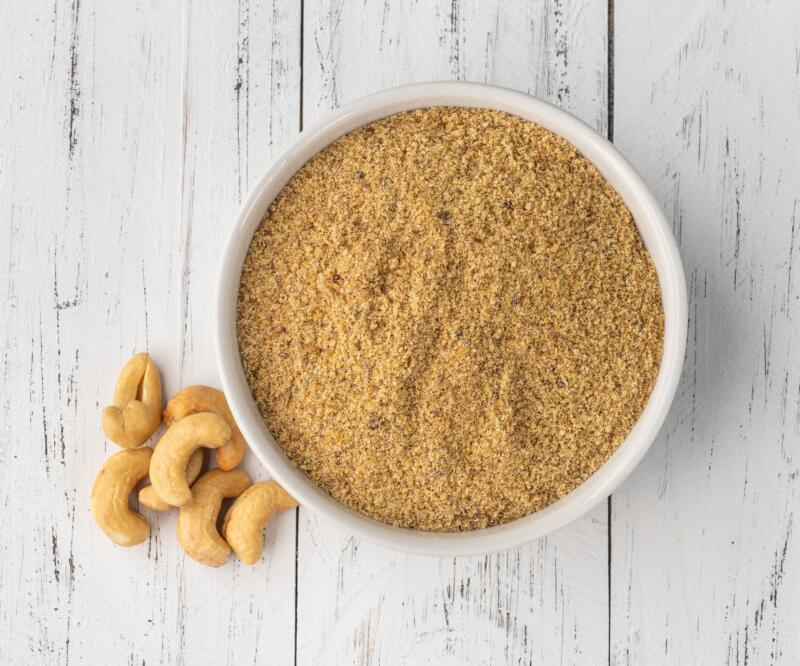
Boasting a subtly sweet and buttery undertone, this flour is a game-changer for recipes ranging from crispy cookies to fluffy pancakes.
Its texture? Remarkably similar to almond flour, ensuring your dishes maintain their beloved consistency.
Nutritionally, cashew flour stands tall with its abundance of healthy fats, proteins, and vital minerals, though it does tip the scales with a marginally higher carbohydrate content.
A word to the wise: while its rich flavor might tempt you, cashew flour can sometimes carry a heftier price tag than its almond counterpart, varying by region and store. So, the next time you’re looking to elevate your baking, give cashew flour a whirl and savor
8. Peanut

If you’re a fan of the rich, nutty flavor of almonds, you might want to consider peanut flour as a substitute for almond flour.
Peanut flour is made by grinding peanuts into a fine powder and then removing most of the oil through a defatting process.
This results in a flour-like consistency that can be used in a variety of baked goods.
9. Pecan

Pecan flour, crafted from finely ground pecans, stands out as a delightful alternative to almond flour. This flour boasts a deep, nutty essence, characteristic of pecans, which can elevate a myriad of dishes.
From pie crusts and cookies to brownies, pecan flour seamlessly integrates, even doubling as a thickener in some sauces.
When baked, goods made with pecan flour tend to have a slightly softer texture compared to those made with almond flour.
10. Macadamia
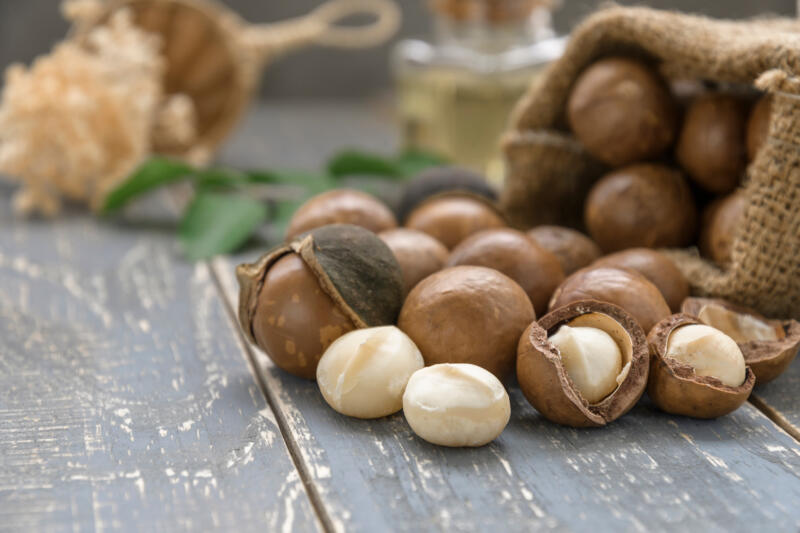
Last but not least, macadamia flour is a wonderful almond flour substitute.
Macadamia flour, derived from the luxurious macadamia nut, emerges as a splendid substitute for almond flour.
Renowned for its rich, buttery undertones, this flour is a gastronomic delight.
It caters to those navigating gluten sensitivities and is brimming with beneficial fats and proteins.
When used in baking, macadamia flour imparts a slightly tender and moist texture to the finished product, distinguishing it from the typical almond flour results.
Furthermore, its compatibility as a 1:1 replacement for almond flour ensures its effortless incorporation into various recipes.
11. Ground Almonds
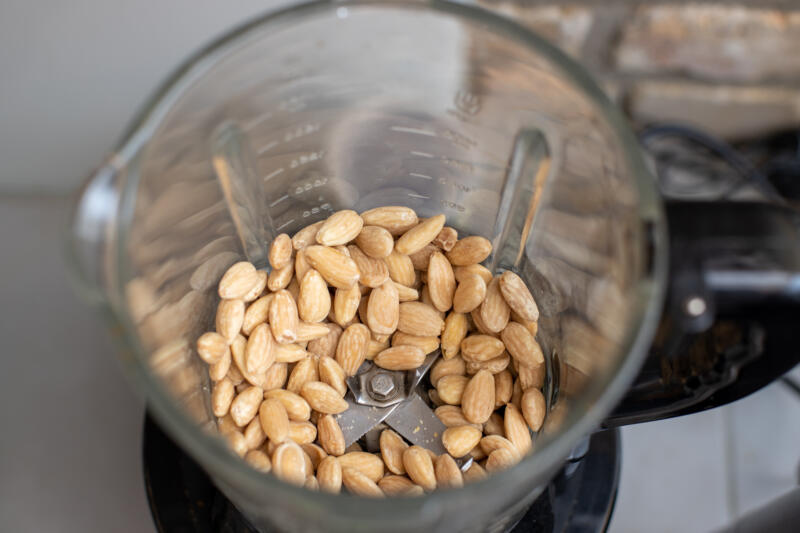
Finely ground almonds, often referred to as “almond meal,” serve as a viable replacement for almond flour.
Almond meal features a slightly rougher texture and a richer almond flavor, attributed to the presence of almond skins.
In contrast, almond flour is finer and made from blanched almonds without skins, resulting in a milder flavor.
While almond flour might be the go-to for recipes demanding a fine texture, like macarons, almond meal can be equally effective in recipes such as cookies, muffins, or bread.
Typically, they can be swapped on a 1:1 basis, but it’s advisable to test a batch first to ensure desired outcomes.
Seed-Based Flours
12. Ground Flaxseeds
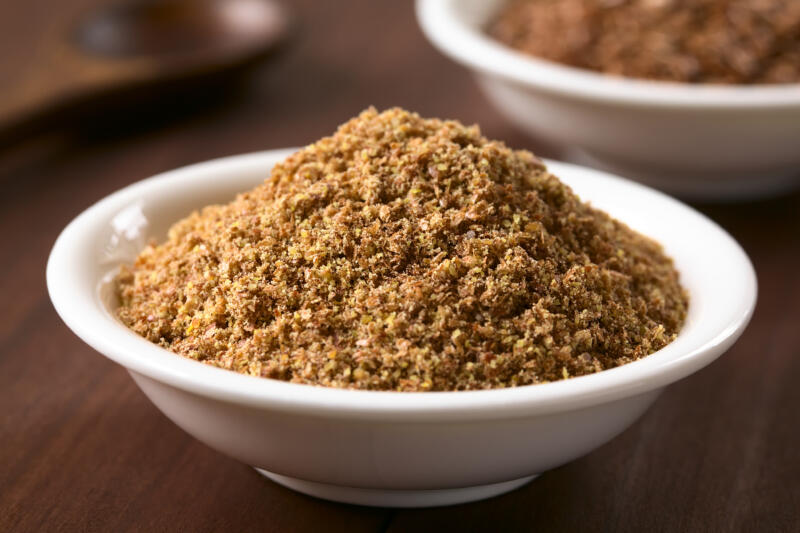
Ground flaxseeds, or flaxseed meal, can serve as an alternative to almond flour in some recipes. They impart a distinct nutty flavor and can influence the texture, making baked goods slightly gritty.
Flaxseeds have natural binding properties, which can be especially useful in recipes needing cohesion.
However, they’re highly absorbent, potentially altering the moisture content of dishes.
While they offer nutritional benefits like omega-3 fatty acids, they aren’t a direct 1:1 substitute for almond flour.
Adjustments in recipes and sometimes combining with other flours might be necessary to achieve the desired outcome.
13. Sunflower Seed
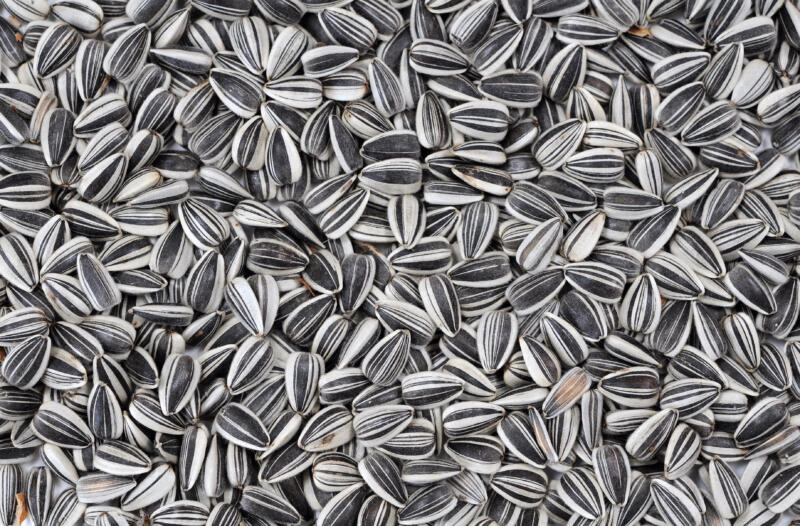
Sunflower seed flour, made from finely milled sunflower seeds, presents a subtle nutty taste.
When replacing almond flour, it seamlessly fits in a 1:1 proportion for the majority of recipes.
Perfect for individuals following a keto or low-carb regimen, this flour imparts a robust texture, notably in treats like cookies and pancakes.
Packed with protein, antioxidants, and a generous dose of vitamin E, it’s a nutritious choice.
However, when making the switch from almond flour, it’s wise to start with a trial batch to achieve the optimal outcome.
Regular Flours
14. All-Purpose Flour
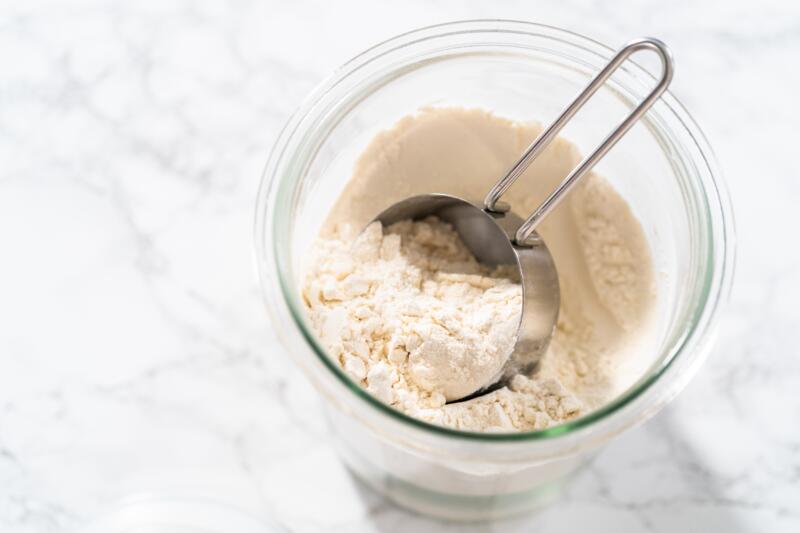
All-purpose flour is an easy and inexpensive alternative to almond flour.
It’s widely available and can be used in equal amounts as almond flour in most recipes.
Unlike almond flour, all-purpose flour doesn’t require as much moisture, making it a suitable replacement in recipes that call for a drier texture.
While it may not have the same nutty taste as almond flour, it’s a versatile substitute that can be used in a wide variety of dishes.
15. Regular Wheat
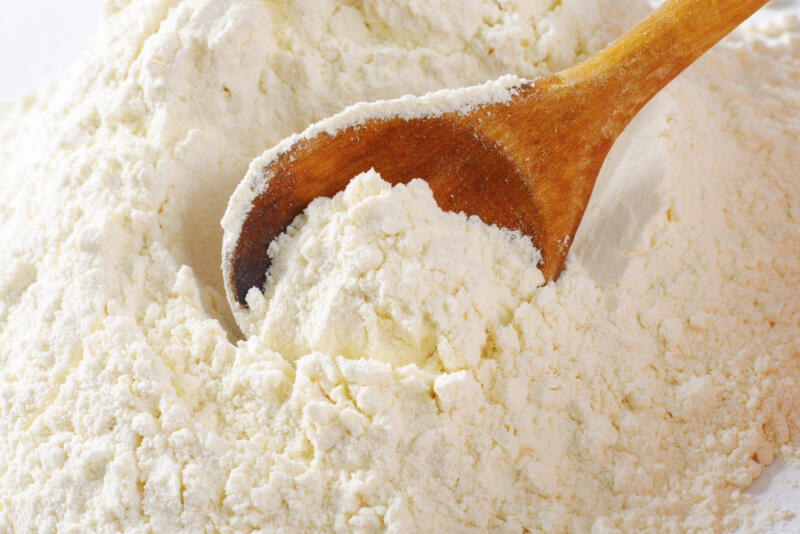
Regular wheat flour often steps in as an almond flour alternative, fitting seamlessly into most baking recipes.
Yet, due to its distinct moisture absorption, adjustments to other recipe ingredients might be necessary.
For those not steering clear of gluten, the choice lies between the standard white flour and its whole wheat counterpart. The latter boasts a richer fiber content and a more substantial texture than its white counterpart.
Nutritionally, while almond flour is protein-rich with beneficial fats, wheat flour leans more towards carbohydrates.
Hence, for those on a low-carb or keto journey, almond flour remains the preferred option.
How to Use an Almond Flour Substitute in Your Favorite Recipes?
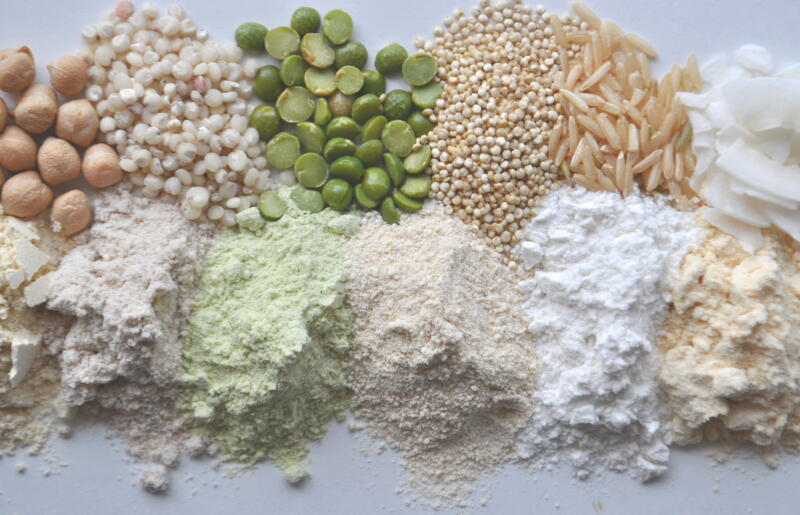
Substituting almond flour in your favorite recipes can be a bit tricky, but with a few tips and tricks, you can easily make the switch.
Whether you’re using a different type of flour or a nut or seed meal, the key is to understand the characteristics of your substitute and how it interacts with other ingredients.
Let’s walk through the steps of using an almond flour substitute in your recipes.
Step 1: Choose the Right Type of Substitute for Your Recipe
For those looking to experiment with different textures in their baking, there are several coarser textured alternatives to almond flour.
These alternatives can provide a different texture and taste to your baked goods, adding an interesting twist to your usual recipes.
Top choices include ground flaxseeds, cashew flour, sunflower seed flour, and oat flour.
Ground flaxseeds, for example, add a nutty flavor and a slightly crunchy texture to breads and muffins.
Sunflower seed flour and oat flour, on the other hand, are great for adding a hearty texture to cookies and pancakes.
Each of these substitutes has its own unique characteristics and can be used as a replacement for almond flour in different ways.
For instance, all-purpose flour offers versatility, suiting a wide range of recipes, while gluten-free flours cater to individuals with dietary limitations.
Step 2: Adjust the Amount of Liquid Used in the Recipe
When using an almond flour substitute, you may need to adjust the amount of liquid used in the recipe. This is because almond flour absorbs more liquid than regular flour, so if you’re using a substitute, the amount of liquid in the recipe may need to be reduced.
It’s best to start by reducing the amount of liquid by about 25% and then adjust as needed for the desired consistency.
Step 3: Finely Process the Alternative before Adding it to the Recipe
Before adding your almond flour substitute to the recipe, it’s important to finely process it.
This step aids in achieving a smoother texture and guarantees thorough incorporation of the substitute.
Whether you’re using a food processor or a high-speed blender, make sure your substitute is finely ground before adding it to your recipe.
Step 4: Adjust the Cooking Time and Temperature
Finally, keep in mind that different flours may cook at different rates, so the cooking time and temperature may need to be adjusted.
For example, coconut flour and other high-fiber flours tend to brown more quickly, so you may need to reduce the oven temperature and increase the baking time.
Always keep a close eye on your baked goods and make adjustments as necessary to achieve the perfect result.
Closing Thoughts
When substituting almond flour, it’s crucial to understand the properties of the chosen alternative, as adjustments in liquid ratios or baking times might be necessary.
There are numerous substitutes available, each with its unique characteristics.
For instance, gluten-free flours like cassava and tapioca, derived from the cassava root, offer distinct textures and flavors.
Nut flours, such as walnut, cashew, and macadamia, provide similar textures to almond flour but introduce different taste profiles.
Regular wheat flour is a common alternative, but it’s essential to remember its higher carbohydrate content compared to almond flour.
Embrace experimentation with diverse substitutes to discover your preferred choice.
And of course, if you have any questions or comments, or if you’ve discovered a great almond flour substitute that we haven’t mentioned, please share it with us.
Happy baking!